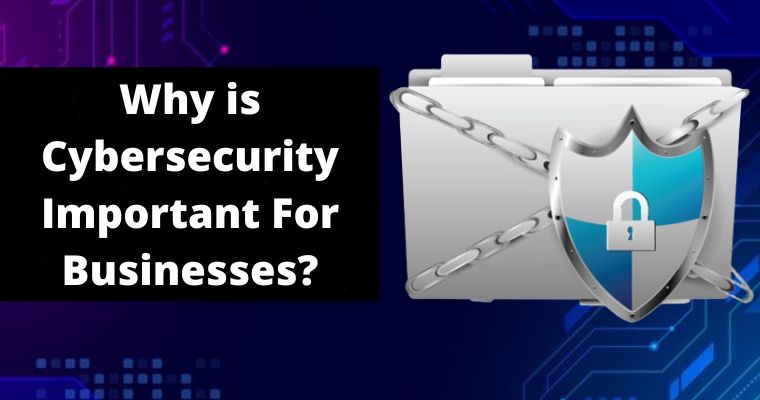Table of Contents
What is a Blockchain Technology?
Blockchain is a data storage system that makes it difficult or impossible to change, hack, or manipulate the data.
A blockchain is essentially a digital ledger of transactions that is duplicated and distributed across the network of computers that make up the blockchain.
When we use the terms “block” and “chain” in this context, we’re referring to digital data (the “block”) that is stored in a public database (the “chain”). On the blockchain, “blocks” are made up of digital information.
Blocks record transaction information such as the date, time, and amount of your most recent purchase.
Blocks are used to keep track of who is involved in transactions. A splurge block for your big purchase. Instead of using your real name, your transaction is logged using a unique “digital signature,” which functions similarly to a login.
Blocks contain information that allows them to be distinguished from other blocks.
Blockchain technology can be used to establish a permanent, public, and transparent ledger system for storing sales data, tracking digital usage, and making payments to content creators like wifi users or musicians.
The storage and sharing of information are being revolutionized by blockchain technology.
It makes it easier to create a distributed public ledger of transactions that is transparent, secure, self-validating, and unforgeable. It is difficult to tamper or mess with the data because every copy has a copy.
Tampering or fiddling with the data is impossible because each user or participating node has a copy.
Blockchain technology is disrupting existing practices across various industry verticals, with applications ranging from maintaining land records to establishing identity, banking, making academic credentials universally recognizable and verifiable, real estate, voting, healthcare, Internet of Things, and many more.
How Does Blockchain Encryption Work?
Blockchain technology creates a secure, anonymous, tamper-proof, and immutable decentralized digital public record of transactions.
Rather than a bank or other intermediary maintaining a proprietary database of documents, blockchain technology makes all records available to the public.
Every time a transaction takes place on the blockchain, a new block of data is added to the digital chain.
If a person (A) sends money or information to person (B), the transaction will be recorded in the blockchain with a unique code.
Because the entire network holds a complete copy of the chain, which shows every transaction, the blockchain builds confidence. Anyone attempting to defraud the system or steal can be immediately detected.
What Encryption Does Blockchain Use?
Hashing data to make it more secure is at the heart of blockchain. The hash function plays a vital role in public-key encryption, which is at the heart of the blockchain.
The blockchain can be encrypted using cryptographic hash functions and digital signatures.
Encryption is the process of transforming data into a format that is incomprehensible to others. For that, you’ll need a key that will encrypt and decrypt the data.
Encryption is a critical component of data security in the Blockchain.
Blockchain, as you may know, is decentralized. People definitely don’t want other people to be able to see their personal data because it’s a distributed ledger.
Blockchain Encryption Algorithm
Algorithms in blockchains ensure that each new block contributed to the network is the sole version of the truth that all nodes in a distributed/decentralized computing network agree on.
Blockchain is a decentralized distributed network that attempts to provide data immutability and security.
Each transaction in a Blockchain network is regarded as fully safe and authenticated because there is no central authority to check and verify the transactions.
Because blockchain is decentralized and records vast volumes of transactions in real-time, it may be difficult to determine what is the truth.
The important thing is to reach an agreement one way or the other, or otherwise malevolent activities like double-spending assaults can happen.
What is blockchain asymmetric encryption?
Because they assure the integrity and security of these distributed computing platforms, consensus algorithms are essential components of blockchain networks.
Because it uses two different keys: a private key and a public key, asymmetric cryptography is helpful. The public key is used to validate signatures and encrypt data, while the private key is used to sign messages and decrypt data.
Because asymmetric keys are used, public-key cryptography is excellent for blockchain technology.
The actions made with the private key can be verified with the public key. For identity management and transaction authentication, blockchain technology employs asymmetric cryptography.
How Secure is Blockchain Encryption Technology?
Data on a public blockchain is secure since it can’t be changed or edited once it’s been verified. A public blockchain is well-known, such as Bitcoin or Ethereum.
The Bitcoin network relies on a large number of volunteers to sign hashes that use cryptography to validate transactions.
Because of this process, transactions are often irreversible, ensuring that Bitcoin’s data security is good.
Blockchain has both a strength and a vulnerability in terms of security. Because of the way blockchain technology is structured, cryptocurrency transactions such as paying with crypto, investing in crypto, and lending bitcoin are anonymous and secure.
However, unlike most other technology, it is not completely impenetrable to alteration.
To assure transaction confidence, it is built on the concepts of encryption, decentralization, and consensus. Most blockchains or distributed ledger technology (DLT) stores data in blocks, each of which contains one or more transactions.
Blockchain technology handles security and trust challenges in a variety of ways. First and foremost, new blocks are always placed in sequential and linear order.
That is, they are always added to the “end” of the blockchain. Each block on the Bitcoin blockchain has a “height,” or position on the chain. The block’s height had reached 646,132 by August 2020.
It’s quite difficult to go back and change the contents of a block after it’s been placed to the end of the blockchain.
This is because each block has its own hash, as well as the hash of the previous block. Hash codes are created by converting digital data into a string of numbers and letters using a math formula.
What Makes Blockchain So Secure?
Redundancy
Every user who runs a full node (wallet) on the blockchain has a comprehensive record of every transaction that has ever occurred on that chain, all the way back to the beginning (genesis block).
Several confirmations are required before any transaction data is accepted and permanently posted to the blockchain. When the accuracy of the data in question is checked with other decentralized full node records, confirmations are obtained.
Multiple independent, decentralized, and verifiable confirmations are required for redundancy, making it extremely impossible* to enter wrong or fraudulent data into the blockchain securely.
Decentralization
The network’s decentralized nature is critical to maintaining a cryptocurrency’s security. Because there is no centralized data storage point, a malicious actor would have to attack and alter every connected wallet, including backups, at the same time.
Decentralization also protects the currency from natural disasters, nation-states, and acts of God that could compromise the network’s integrity.
Simplicity
As fascinating as blockchain technology is, it is, at its foundation, a pretty simple programming language. This simplicity considerably decreases the chances of a bad actor exploiting undisclosed vulnerabilities.
Cryptography
More than a century of evidence supports the notion that cryptography may provide highly efficient data protection (altering data to be meaningless without authorization to access the data).
Furthermore, the many different ways that cryptography algorithms are developed and computed allow distinct ways to attain a consensus. As a result, the environment is more dynamic, and attack vectors are more likely to be chain-specific.
Customization
Have you ever wondered why there are so many cryptocurrencies to choose from? When a developer wants to launch a new cryptocurrency, they can either “fork” an existing blockchain or create their own from the ground up.
In any case, they have little chance of succeeding unless they bring more features, mechanisms, a source of value, increased security, or functionality.
The potential for a developer to create particular and new features give a level of security that other kinds of currency did not previously have. Core elements that are frequently customized include:
The total amount of currency to be created and the rate at which new coins are coined are both predetermined. The power to create an inflationary or deflationary currency.
Blockchain Encryption vs Hashing
Hashing is a non-reversible procedure, whereas encryption is reversible.
In encryption, the sender encrypts the communication using a key, and the receiver decrypts the message with the same or a different key (depending on the kind of encryption).
Hashing is when a sender applies a hashing function to an original message to generate a hash message (which is irreversible).
The sender then sends the message to the receiver, along with the hash function.
The receiver has the same hash function as the sender, and it may ensure that the message is free of errors by producing a new hash message using the message function and message.
If both hash messages are the same, then the message was not altered during transmission.
Encryption: Encryption is used for confidentiality in real life (no one can eavesdrop on messages).
In actual life, the hash function ensures authenticity (that only the sender has).
Encryption: Encryption is used for confidentiality in real life (no one can eavesdrop on messages).
In actual life, the hash function ensures authenticity (that only the sender has sent this message).
As a result, encryption is a two-way process, whereas hashing is a one-way one.
What Public Key Encryption Does Bitcoin Use?
Bitcoin’s protocol includes public-key cryptography, which is utilized in various places to secure the integrity of communications created by the system.
Public key cryptography is heavily used in the construction of wallets and the signing of transactions, both of which are essential components of any currency.
The Elliptic Curve Digital Signature Algorithm (ECDSA) is used by Bitcoin’s protocol to generate a fresh set of private and public keys.
The public key is then used in conjunction with a hash function to create the public address that Bitcoin users use to send and receive money.
The private key is kept private and is used to sign a digital transaction in order to ensure that the transaction’s origin is genuine.
How Important is Cryptography Encryption To Blockchain?
Blockchains primarily employ two types of cryptographic algorithms:
1) asymmetric-key algorithms
2) Functions with hashes
Functions that have a hash value
Hash functions are notably used with the intention of giving the capability of a blockchain’s single view to each participant. Blockchains in general use the SHA-256 and RIPEMD-160 hashing algorithms as their hash function.
What are the Benefits of Cryptographic Hash Functions?
Cryptographic hash functions aid the blockchain in the following ways:
- Uniqueness – that is, each input produces a unique outcome.
- If you pass any input through the same hash function, you’ll get the same output every time.
- Quickness – The product can be produced in a short period of time.
- We can’t reverse engineer, which implies we can’t create the input from the output and hash function.
Furthermore, hash functions play an important role in connecting blocks and ensuring the integrity of the data stored within each block. Any change to the block data can cause inconsistency, breaking the blockchain and rendering it useless.
This criterion is met via the avalanche phenomenon, which is a property of hash functions.
This feature is what makes the data on the blockchain dependable and safe. And any modifications to the block data will cause the hash value to differ, rendering the blockchain invalid and immutable.
Asymmetric-Key Cryptography
It’s where a random number algorithm is used to generate the private key, and an irreversible process is used to calculate the public key.
Asymmetric encryption has the advantage of including separate public and private keys that can be sent through unsecured channels.
It is likely to have a number of drawbacks, including slow processing speed and insufficient encryption strength. Furthermore, ensuring the security of the asymmetric encryption technology during data transfer on the blockchain is critical.
It’s where a random number algorithm is used to generate the private key, and an irreversible process is used to calculate the public key.
Can Blockchain Fail?
The existing blockchain architecture is inefficient in terms of energy usage and scale. The core problem is that practically everyone must process all blockchain transactions, and everyone must have a copy of the global ledger.
As the blockchain grows in size, more processing power and bandwidth are required, and there is a concern that the blockchain will become too centralized in terms of decision-making and validating power, as just a few people are willing to devote their time to keep it running.
Blockchain governance, like scale issues, is a topic that has yet to be solved. Because there is no central player, there must be means for settling differences. The fork of The DAO and the subsequent arguments are a case in point.
While blockchain technology may provide novel decentralized governance solutions, it is not sufficient in and of itself.
Blockchain has introduced a lot of good and potential, but it also has some drawbacks that need to be addressed.
Complexity
Blockchain has spawned a slew of new processes, terminologies, and technology. Cryptography and decentralization become more mainstream as a result.
Functionality
Transactional speeds, verification processes, and data limits are among obstacles that blockchain faces in its operation. Everything is strongly reliant on node processing and network growth.
Network
A large number of users and nodes connected to a reliable network are required for the blockchain to stay stable and avoid network corruption.
In addition, as consumption grows, so does the demand for more powerful mining gear resources for an infrastructure that already consumes a lot of electricity.
Security
If we ignore the anonymous transactions that necessitate peer-to-peer trust, the expanding number of nodes reveals some additional security issues. For instance, consider the so-called 51 percent attack.
Because blockchain relies on computers to authenticate transactions, anything that is verified by half of the computers in the network is considered true.
As a result, if half of the nodes affirm that a lie is true, the entire blockchain network will know that lie is true.
To avoid problems like these, the procedure is lengthened and difficult, either by increasing the number of confirmations required or by increasing hashing power.
Can Blockchain Replace The Internet?
Over the last few decades, the internet has evolved significantly. People of a specific generation may recall dial-up connections or Netscape as the first web browser.
Now, social networking reigns supreme, and finding information at the click of a mouse is easier than ever.
However, modern technology raises significant privacy problems, with many sites collecting, storing, and occasionally exchanging personal information. This has prompted many technophiles to speculate about what the web’s future might include.
Enter blockchain, a decentralized database technology that some claim will revolutionize the internet while also giving people more control over their personal information.
According to some, blockchain will be the foundation for the next generation of the internet, dubbed “Web 3.0.”
Conclusion
Blockchain is a distributed and decentralized technology that began as the technology underpinning the invention of bitcoin but has recently grown in popularity due to its several cybersecurity applications, including private messaging and cloud solutions.
With alternatives like FileCoin and Storj, the latter is becoming increasingly popular. Through smart contracts and the usage of their unique coin, they created a very secure cloud storage marketplace.



